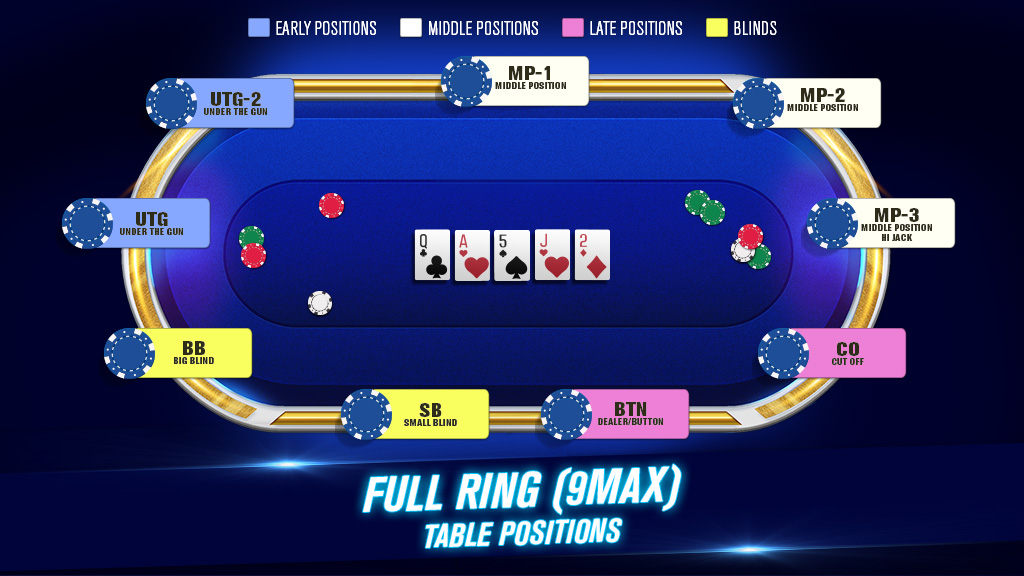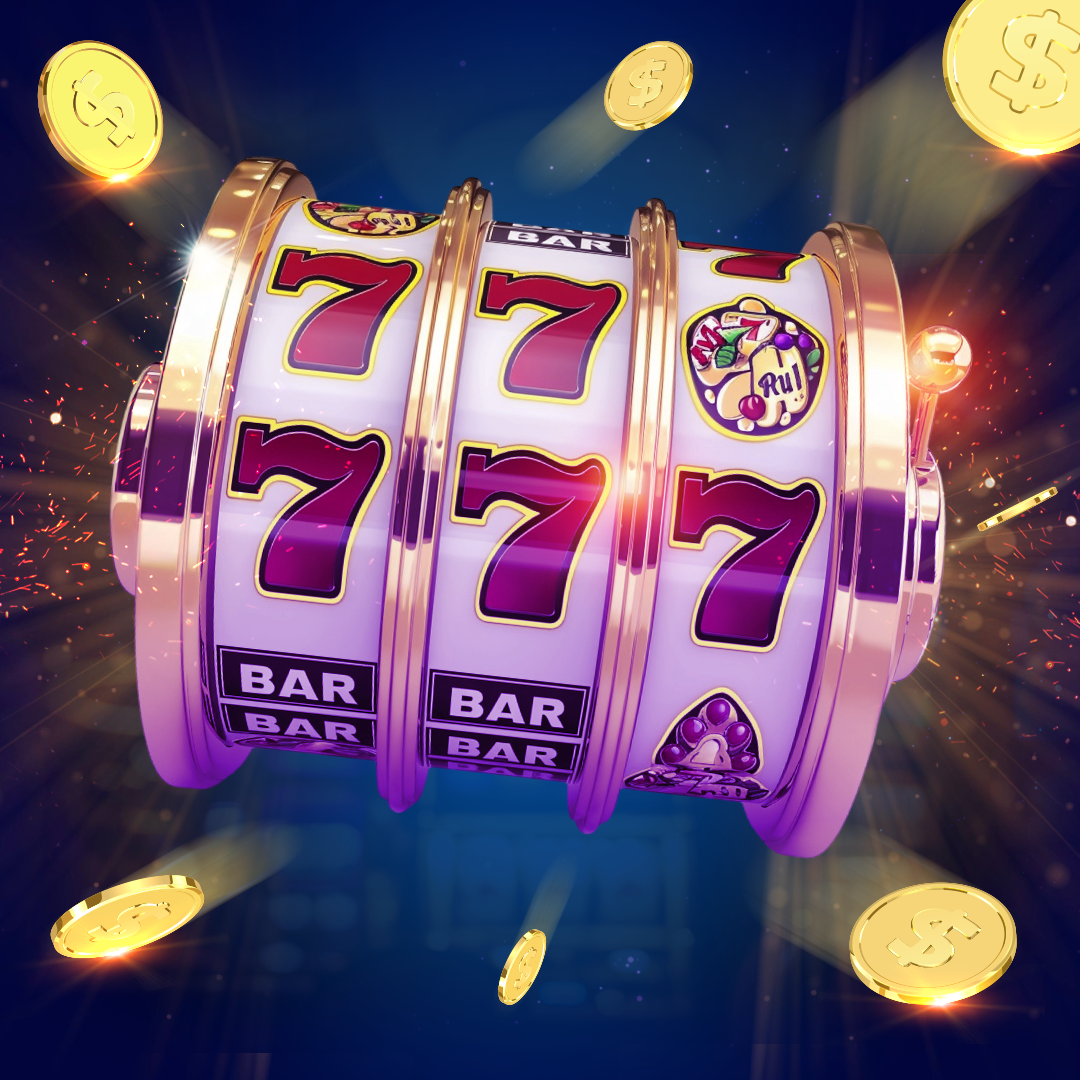The growth of online poker might have slowed somewhat since its noughties heyday, but millions of people are still taking to the virtual tables every day, looking to wager everything from a few cents to thousands of dollars. And many others are heading to free poker games, where they can play their favorite games without risking a single penny of their hard-earned cash.
What’s more, many are interested in playing poker online, but the complex sounding rules and many variations put them off. But learning poker shouldn’t be and isn’t tough.
First, you need to identify the best game to play, and that’s undoubtedly Texas Hold’em, the most popular poker game in the world. No other version even comes close.
Then, wannabe players simply need to learn how to play poker Texas Hold’em for beginners. It looks complex, but once you understand the fundamental dynamics of the table, the gameplay, and the hand rankings, you’ll be ready to sit down at a free or low-stakes poker table and hold your own.
And guess what? Here are Play WSOP, we’ve come up with the ultimate guide on how to play poker Texas Hold’em – a guide that starts from the bare bones and builds things up until you’ve got a complete understanding of the rules of Texas Hold’em. We’ll also throw in some tips to give you a better chance of winning when you play!
So, what are you waiting for? It’s time to start your poker journey by learning Texas Hold’em rules with the experts at Play WSOP!
What is Texas Hold’em Poker?
Before looking at how to play Texas Hold’em for beginners, let’s step back and get a broader overview. What is Texas Hold’em? Why is it so popular? And where can you play Texas Hold’em, both online and in the real world?
The history of poker dates back to the early 1800s in the New Orleans area. There, people played a variation of poker with just 20 cards. However, by the 1830s, 20-card poker had a challenger in 52-card games. At first, these were simple games of luck, but a considerable element of skill was introduced when the draw was added, which saw players swapping cards for new ones.
From there, other varieties of poker emerged, most noticeably Stud, which mixed face-up and face-down cards to create a new dynamic. Stud poker is still popular today.
But where does Texas Hold’em come in? It seems to have been born in the early 20th century and was introduced into Vegas casinos in the 1960s. There, it was popularized by famous names like Doyle Brunson, Amarillo Slim, and Crandell Addington. The Golden Nugget was the only place to play for a while, but other casinos caught on, and the game spread throughout the city.
Outside Nevada, interest grew in the 80s, but the real Texas Hold’em explosion happened in the late 90s and early 2000s, when online poker took off. Many TV shows also launched at that time, almost always featuring Texas Hold’em and making celebrities of players like Phil Helmuth, Daniel Negreanu, and Phil Ivey.
Now, Texas Hold’em is the predominant form of the game, found at most land-based casinos, along with many online venues – including Play WSOP! It’s popular for many reasons, but the biggest is excitement – no other variation offers such an exhilarating ride over the course of a hand. And the big bets help, too, with No Limit Hold’em becoming the most common form of Texas Hold’em.
Real money poker sites have sprung up around the globe, with some boasting millions of players. Free poker is also hugely popular, allowing people to experience the rush and sociability of the game without risking their cash.
Basic Rules of Texas Hold’em
Before you can sit down at a table, it helps to have at least a reasonable grasp of the rules, and that’s what we’re about to look at. Please don’t look at the following section and be discouraged – explaining a hand is undoubtedly a long process, but it will become second nature once you’ve experienced it a few times.
The number one thing to remember is this: you’re trying to be one of two things:
- The player with the best five-card poker hand when the hand comes to an end.
- The last player remaining in the pot.
Satisfy either of these criteria, and you’ll scoop the money in the middle and add an extra chunk of change to your bankroll.
So, let’s look at a whole hand, broken down into several stages.
Initial Betting
One player is assigned to be the dealer and has a dealer button placed in front of them. Then, two players make compulsory bets. The player to the dealer’s left will place a bet called the Small Blind, while the player two places to the left will place the Big Blind. This Big Blind is usually twice the value of the Small Blind. These initial bets encourage action after the cards have been dealt.
Cards Are Dealt
The dealer then deals the cards, starting with the player to the dealer’s left. All players will receive two hole cards, which are face-down and visible only to them. These hole cards, along with position, are what players will use to decide whether to continue in the hand.
Betting Round #1
Now comes the first round of betting. The player to the Big Blind’s left is the first to act. They can either match the bet placed by the Big Blind, raise the bet placed by the Big Blind, or fold their hand. Then, the action moves clockwise, with each player choosing whether to call, raise, or fold their cards.
When the betting gets to the player who placed the Small Blind, they’ll need to make the same decision, but their initial bet counts as part of their wager. This is the same for the Big Blind. If no raises have been made and players have only staked the same as the Big Blind, the Big Blind can choose to check, meaning they place no raise but continue in the hand.
Once all players have placed an equal amount of money into the pot or folded, the game proceeds to the Flop.
The Flop
The Flop is where things start to get interesting. The dealer places three cards face-up into the center of the table. These are the first of the community cards, and they can be used by everyone in their quest to make the best possible five-card poker hand. Now, everyone should have a better idea of the strength of their hand, although there are still two more community cards to be dealt.
Betting Round #2
Another round of betting now takes place, this time starting with the person who placed the Small Blind. If they’re not still in the hand, the first remaining player to the dealer’s left begins. Players can check if no bet has been made, or they can call or raise a previous bet. They can also fold.
Like the first betting round, the action continues when all players have placed equal-sized bets or folded their cards.
The Turn
Another card is now dealt face-up in the center of the table. This is called the Turn, another card all players can use to create the best possible five-card poker hand. All but one card has now been dealt, so everyone should have a decent idea of their hand’s strength.
Betting Round #3
Now follows another betting round, which works the same way as the second betting round. There aren’t likely to be too many players left in the pot now, plus the pot should be building nicely. Expect bigger bets to be made, forcing players to make tough decisions on whether to stay in the game or fold.
Once everyone has called the highest bet or folded, it’s time to get to the last card being dealt.
The River
One more card is now added face-up to the center of the table. This is called the River. Everyone remaining now knows exactly what their best hand is. But how does it compare to other players still active in the hand?
Betting Round #4
Now comes the final round of betting. It’s here you’re most likely to see the biggest raises and reraises, as remaining players try to get their hands on the pot. It works in the same way as the previous two rounds of betting.
The showdown happens once all players have placed equal amounts into the pot or folded.
Showdown
In the showdown, all players in the pot turn over their cards and reveal their hands. The player with the best hand then scoops the pot. The pot gets split equally if two or more players have the same strength hand.
Once the winner has scooped their chips, the dealer button moves one place to the left, and the next round begins.
Texas Hold’em Hands and Hand Rankings
To play Texas Hold’em effectively, you must know the hand rankings. Commit these to memory, or print off this page so you have an easy reference. The Texas Hold’em hand rankings can be seen below:
- Royal Flush: This is the best hand in the game and is exceptionally rare. It consists of cards running from 10 to A, all the same suit. For example, 10-J-Q-K-A, all of diamonds.
- Straight Flush: This is like a royal flush, but it can be any five running cards, provided they’re all the same suit. For example, 7-8-9-10-J of clubs. If two players have a straight flush, the winner is the player with the highest card.
- Four of a Kind: This is a pretty obvious one, with the hand consisting of four cards of the same value, along with one kicker. For example, A-A-A-A-K. If two or more players have four-of-kind, the player with the highest set of quads wins. If multiple players have the same four cards, the player with the highest kicker wins.
- Full House: The first of the hands you’ll see regularly, it contains three cards of the same value and a pair of cards of the same value. The suits of the cards are irrelevant. For example, 10-10-10-7-7. If multiple players have a full house, the player with the best set of three cards wins. If this doesn’t separate players, the player with the best pair wins.
- Flush: A flush is a hand containing five cards, all of which are the same suit. They must not be consecutive – if they are, you have the far stronger straight flush. For example, 3-5-6-7-A, all of hearts. If multiple players have a flush, the player with the highest card wins. If this doesn’t work, the second-highest card is used, then the third, fourth, and fifth.
- Straight: This hand features five consecutive cards, not all the same suit. For example, 2-3-4-5-6, of various suits. If more than one player has a straight, the player with the highest straight wins.
- Three of a Kind: Another pretty obvious hand, this features three cards of identical values, along with two unpaired kickers. For example, 10-10-10-A-6. If more than one player has three of a kind, the player with the highest three cards wins. If this doesn’t separate players, the highest kicker is used, then the other kicker.
- Two Pair: A hand featuring two pairs of identical cards and a kicker. For example, 7-7-10-10-K. If more than one player has two pair, the player with the highest top pair wins. If this doesn’t work, the other pair determines the winner. And if this doesn’t work, the player with the best kicker wins.
- Pair: This hand has one pair of identical cards and three kickers. For example, A-A-10-5-2. If two or more players have a pair, the player with the highest pair wins. If this doesn’t separate players, the highest kicker is used, then the second highest, then the third highest.
- High Card: If you have none of the above hands, your hand is ranked by its highest card. For example, if you had 4-6-8-10-K, your hand would be king high. If more than one player shows high card, the player with the highest card wins. Then the second, third, fourth, and fifth-highest cards are used.
But what happens if two or more players have the exact same hand and can’t be separated? In this instance, it’s a split pot, sometimes called a chopped pot. The pot will be divided equally between the players with the tied winning hands. So, if the pot is $1,000, Player A would get $500, and Player B would also get $500.
Playing Texas Hold’em Online
The best place to learn how to play Texas Hold’em for beginners is online. Players will find two distinct ways to play poker using the internet.
The first way to play is at a real money online poker site. The big names here are GGPoker and PokerStars. After creating an account with a real money poker site, you must deposit money before hitting the tables. Most will start at low-limit tables, plus some sites even offer freerolls – free tournaments with real cash prizes.
Real money Texas Hold’em allows you to win money as you play, but you’re risking your bankroll too – and new players are likely to lose before they get into the swing of things. Many people enjoy the thrill of risking money on the turn of a card or going up against the best players, who nearly all play real money Texas Hold’em poker online.
Then there are the free poker sites, such as Play WSOP. Free sites are precisely as they sound – they allow you to play poker online against other players without depositing a cent. Instead, you play with play money.
Free poker sites also usually foster larger communities of players, making them an incredibly social place to play. For example, at Play WSOP, we have nearly 120k players in our Players Lounge and 3 million followers on Facebook.
However, a couple of issues prevent many from making the leap to online poker: safety and fairness.
Many are concerned about entering their banking details online, fearful they’ll fall into the wrong hands. To overcome this concern, always play at sites using SSL encryption. But if you’re playing at Play WSOP, you won’t need to worry about entering banking details, as there’s never a need to provide them – you can play for free without any purchase.
And what about fairness? Don’t online sites cheat by rigging the cards? If you play at a real money poker site, just ensure it’s regulated. If it’s overseen by a reputable government agency, it will be prevented from cheating.
You can also be sure every hand is fair at Play WSOP, as we use a complex random number generator, which randomly deals every hand. This means nobody – not even Play WSOP employees – knows which cards are coming next.
Strategies for Texas Hold’em
So, you’ve learned the Texas Hold’em rules and have a pretty good idea of how to play Texas Hold’em. But you’re wondering how to get ahead. That’s where we come in. Below, we’ll talk about a few Texas Hold’em strategies every player should understand before they place their first blind bet.
Basic Strategies
Here are a couple of basic strategies every prospective poker player should understand when trying to learn how to play poker Texas Hold’em style.
Starting Hand Selection
The first decision you’ll need to make when sitting down at the table will be on your starting hand – should you be entering the hand at all, or is it better to muck your hand and try again with the next? And here’s the answer: it’s nearly always best to fold. Top poker players fold their hands far more often than they play, only getting involved in pots when they have premium starting hands.
But what are premium starting hands? Well, A-A is the best hand. If you have this hand, quite simply, you should never fold. Even if someone wants you to put all your chips at risk, do it. Other very strong hands are A-K and K-K. You should also consider playing if you have any pair that’s 9-9 or higher, or A-Q or A-J.
If you have other hands, you should only play if the situation permits. So, don’t call any large raises, but do consider playing if the price is low and you’re in favorable position. And talking of position, that’s what we discuss next…
Importance of Position
Take a look at the names of each poker position below:

The later you are to act, the better. Being in the later seats, especially the Dealer seat, allows you to observe all other players before making your decision. It’s advisable to always play conservatively when in early position but play slightly more adventurously when in late position, if the actions of previous players permit.
Advanced Strategies
Here are some more advanced poker strategies – perfect for players who have learned how to play Texas Hold’em and want to take their game to the next level.
Reading Opponents
Being able to read opponents and deduce the hands they could have is very important in poker. In land-based games, you can look at players directly, analyzing everything from their facial movements to the way they hold their cards.
But remember, other players can also read you. So, pay attention to everything about your demeanor. And if you’re confident, you might even exhibit a behavior as a red herring, designed to essentially double bluff your opponent.
But online, the opportunities to read your opponents are fewer. Instead of looking at them, you must analyze how they bet. What are their bet sizes like? Did they bet confidently from the first round of betting? How long did it take them to call or raise? After a while, you might also start understanding how aggressive they are, maybe realizing that those big bets they’re making shouldn’t be respected quite as much.
So, get used to analyzing your opponents just as much, or even more, than you analyze your own hands. As with most things, you’ll get better at reading players as you become more experienced.
The Art of Bluffing
The first strategy to remember when bluffing is this: rarely do it. You might see bluffs being made every other hand in the movies, but the best players only unleash this tactic occasionally, as it’s risky.
If you are going to bluff, you’ve got to do it at the right time. If a player looks weak – perhaps they’ve checked or only placed a low bet – then a bluff could be justified. But don’t start throwing out bluffs when other players are exhibiting strong hands, as you’re unlikely to put them off calling.
Also, it’s always best to bluff when you have an out. For example, if the Flop has just come down and you’re one card away from hitting a straight, it might be a good spot to bluff. Why? Because even if someone calls you, there’s still a chance you’ll make that straight and win the pot.
Betting Strategies
Here are a few betting strategies to understand if you want to increase your knowledge of how to play Texas Hold’em.
- Continuation Bet: If you’re the player to make a raise during the first round of betting, you almost have to take the lead in the second round, too. Not betting will show everyone you’re weak, and they’ll immediately raise and push you off the hand.
- Limit Calling: If you’re going to call, consider carefully whether you should raise instead. In some situations, such as when the previous raise is small, just calling is a sign of weakness. To look strong and force others to think twice about going against you, raise instead.
- Consider Pot Size: If there’s a tiny pot and someone makes a giant bet, consider whether it’s worth entering the pot in the first place. Weigh up risk vs reward every time you consider calling or raising a bet.
- Don’t Over Bet Suited Cards: Suited cards are two hole cards of the same suit. Some players over-value them, always thinking they could hit a flush. But in reality, suited cards – especially low suited cards like 7-2 – shouldn’t affect your decision on whether to call, raise, or fold. Sure, they’ll hit flushes sometimes, but over time, you’ll likely lose more than you win.
- Take the Initiative: Finally, when you have a good hand, take the initiative and start betting, and don’t be afraid to reraise your opponents’ bets. By playing strong, you’ll knock weaker hands out of the pot instead of letting them limp along and potentially get lucky when the last card is revealed.
Insider Tips
Before we wrap up this page, let’s look at some insider tips guaranteed to boost your quest to learn how to play poker for beginners.
- Manage Your Bankroll: Your bankroll is the money you have set aside for playing poker. Never risk all your bankroll on one table or tournament. Instead, only risk, at most, 5% of your bankroll at a time. And if you lose that, have the discipline to walk away. This ensures there’s always money left over for tomorrow.
- Avoid Common Mistakes: Some common mistakes include playing too many hands, ignoring position, not watching opponents carefully, bluffing too often, and not being prepared to cut your losses and fold when necessary.
- Stay Focused and Maintain Discipline: The longer you play, the less focused you’ll be. So, take regular breaks to maximize your time playing. Also, stick to a sensible game plan throughout. Some people will lose money and go on tilt, meaning they start playing reckless poker. This usually ends with them losing all their money. If you feel you’re on tilt, get up and walk away from the table immediately.
- Continuous Learning and Improvement: Even professionals like Daniel Negreanu are constantly learning. Take the time to understand new strategies or trends in the game, plus regularly go back and firm up on the basics. There’s always something new to learn in the world of poker.
So, there you have it: everything you need to know to learn how to play Texas Hold’em poker. Start by learning the hand rankings, and then study the gameplay carefully. It might even be helpful to watch a few games – something you can do at most online poker sites – to get familiar with the ebb and flow of a hand and what to do in specific situations.
Once you’ve got a reasonable idea of the rules of Texas Hold’em, it’s time to hit the tables. You can practice at plenty of websites for free – including here at Play WSOP – or you can head to a real money poker site and start risking your cash straight away.
And when you feel comfortable playing, wherever that happens to be, don’t make the mistake of thinking you’re the finished article. Instead, remember that there’s always something else to learn about poker. Check out the other fantastic resources on this site to learn about new games, such as how to play 3 Card Poker, and different strategies to dominate the tables.
Why not sign up for a Play WSOP account today and start playing poker online for free?
Final Thoughts on Learning How to Play Texas Hold’em
So, there you have it: everything you need to know to learn how to play Texas Hold’em poker. Start by learning the hand rankings, and then study the gameplay carefully. It might even be helpful to watch a few games – something you can do at most online poker sites – to get familiar with the ebb and flow of a hand and what to do in specific situations.
Once you’ve got a reasonable idea of the rules of Texas Hold’em, it’s time to hit the tables. You can practice at plenty of websites for free – including here at Play WSOP – or you can head to a real money poker site and start risking your cash straight away.
And when you feel comfortable playing, wherever that happens to be, don’t make the mistake of thinking you’re the finished article. Instead, remember that there’s always something else to learn about poker. Check out the other fantastic resources on this site to learn about new games, such as how to play 3 Card Poker, and different strategies to dominate the tables.
Why not sign up for a Play WSOP account today and start playing poker online for free?
Frequently Asked Questions
Do you have a question about learning how to play poker Texas Hold’em? If so, check out the FAQs below.
How to play Texas Hold’em?
The basic rules of Texas Hold’em are this: have the best hand when the hand ends or be the final player remaining in the hand. You’ll have two hole cards and five community cards, and you’ll need to make the best five-card poker hand from them. But not all cards are dealt at once – instead, they come in stages, with betting rounds accompanying each.
How to play Ultimate Texas Hold’em?
Ultimate Texas Hold’em is not real Texas Hold’em. Instead, it’s a game played against a dealer, where you must beat the dealer’s hand. There are several betting rounds where you decide to check or raise, and when the hand ends, you win a cash prize if your hand beats the dealer’s. It’s a fun game but not as enjoyable as real Texas Hold’em.
How to play Texas Hold’em for beginners?
If you’re a beginner, you should start by learning the hand rankings and then familiarizing yourself with how a standard hand works. You should also practice by playing – many like to play for free here at Play WSOP to refine their knowledge and develop their confidence, before then heading to online poker sites to play for real money.
How to play Texas Hold’em at a casino?
First, find a table at your level – some can only be joined for thousands of dollars, while others just require a few cents. Then, wait for a seat to become available. Once you’ve sat down, most will wait until it’s their turn to place a blind before starting to play. Then, play as you would online, using the same gameplay we’ve shown you further up the page.
What is the best starting hand in Texas Hold’em?
The best starting hand in Texas Hold’em is A-A. If you get this hand, you should see the Flop every time, regardless of how much other players bet. But be prepared to fold after the Flop, if necessary – don’t fall into the trap of becoming too attached to your starting cards, as A-A can quickly become a weak hand if the wrong community cards are dealt.
How do I calculate pot odds?
Pot odds is a more complex subject, but in a nutshell, they look at the size of the pot and the size of the bet you’re facing and let you know whether calling is the right move. To calculate pot odds, take the pot size (including any money you’d need to add) and then divide the call size by it. Finally, multiply the result by 100 to get a percentage. You then need to assess whether you’ll win the pot more often than the stated percentage – if so, you should call. If not, you should fold.
What is a bluff and when should I use it?
A bluff is a bet made when you don’t have a strong hand. It is made to force other players to fold so you become the only player left in the pot and therefore win. Bluffs should be used sparingly and only when you perceive weakness in the other players in the pot.
How do I handle a losing streak?
Losing streaks happen to even the best players. The key is to remain calm and not allow frustration to cause any rash moves. If you feel your emotions are affecting how you play, leave the table and return tomorrow when you have a better mindset. Also, take the time to evaluate your play. Are there any areas you can improve to increase your chances of winning?
Are there different variations of Texas Hold’em?
There are three basic variations of Texas Hold’em. They all follow the same gameplay, but the betting limits are different. No Limit Hold’em lets you bet however much you want, at any time. In Limit Hold’em, bets must be the same size as the Big Blind in the first two betting rounds and twice the size in the second two rounds. And in Pot Limit Hold’em, the maximum bet is the same as the pot size.








